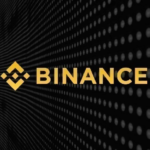Inflation expected in Venezuela in 2025 and the collapse of the bolivar against the dollar are forcing Venezuelans to adopt parallel solutions to protect their purchasing power. Stablecoin Tether (USDT) and fintech application Cashea stand out as part of the anti-inflation measures used by Venezuelans.
These two mechanisms are becoming integrated as a means of financing and protection against financial deterioration.
This year so far, Venezuela’s official dollar rose 290%. This made the minimum wage for workers equal to 65 cents on the dollar. The so-called “bonus” increases the average Venezuelan’s income by just over $100.
Furthermore, inflation continues to rise. In the absence of official data from the Central Bank of Venezuela (BCV), whose last report was released in November 2024, other organizations are making their own predictions, as is the case with the now-defunct Venezuelan Financial Supervisory Authority (OVF).
OVF analysts noted that in their latest report released in April 2025, the inflation rate ended at 18.4% month-on-month. Annualized increase of 172%.
Moreover, the International Monetary Fund (IMF) predicts that inflation will rise to 269.9% this year and end at 682% in 2026. Analysts at the Institute of Economic and Social Studies (IIES) at Andres Bello Catholic University (UCAB) predict that the inflation spiral will reach 220% by the end of 2025.
The following graph shows the evolution of annual inflation in Venezuela over the course of one year. We can see that from January 2025 onwards, the indicator started to increase steadily until April.
US dollar cash usage decreases
This hyperinflation scenario is not new, as Venezuela has already experienced hyperinflation in recent history. This situation initially caused a boom in cash dollars. In the midst of a moribund economy in 2018, dollars started flooding into the socio-economic realm, giving the situation some respite.
However, the use of physical dollars in the South American country has steadily declined since 2020. This means that in the first half of 2025, Cash currency usage decreased by 37% compared to the previous year, according to data from socio-economic analysis firm EcoAnalytico.
This means that The use of the bolivar as a means of payment once again took the lead. This is partly due to a series of government measures that impose additional taxes on dollar purchases.
Due to the above, the market value is linked to the US dollar, making USDT even more prominent as an alternative to the traditional US dollar. last year Adoption of this stablecoin is increasing As reported by CriptoNoticias, it was developed in Venezuela by the company Tether Limited.
This can be seen in companies that have started to integrate payments at the point of sale using USDT, an asset circulating in peer-to-peer (P2P) markets operating at prices above 300 bolivars per unit in the country.. This is more than 50% higher than the official rate set by BCV.
This integration was carried out organically through Binance and through applications and partnerships between local companies and their exchanges. This allowed Promote the adoption of USDT as a safe haven amid cash shortages and loss of confidence in national currencies.
Economist Daniel Arraez said, “Having no bolivar currency and taking shelter in USDT is a valid option because the movements of the bolivar currency in the market do not affect them.”
In a comment to CriptoNoticias, the digital asset expert clarified that USDT is “not equivalent to one dollar” because it is private money issued by a company. On the other hand, the US dollar itselfis a sovereign currency.
Still, he points out that using USDT in Venezuela would allow the country to “better weather inflation” and operate in international markets with less exposure to domestic currency devaluations.
savior of trust
In parallel, Casia, Venezuela’s main credit and debt company, introduced digital credit in an environment where traditional banks lost the ability to finance consumption.
Based on the “buy now, pay later” model, the application processes transactions equivalent to 3.5% of Venezuela’s monthly gross domestic product (GDP) ($8.57 billion), or more than $300 million each month.
Moreover, its presence reaches 40% of users who have access to fintech services in Venezuela, facilitating installment payments for products, Average consumer finance dollarized product Payments can be made in local or stable currencies in installments.
Arraez emphasizes that the emergence of Casia will “reduce the inflationary effect” by restoring a form of credit that national banks cannot maintain. By accessing dollarized digital lines, users can cushion the loss of purchasing power and stabilize spending in the face of currency fluctuations, he explains.
In fact, this model encourages informal arbitrage practices, with some users buying goods with Cashea credits and reselling them at parallel rates. This reflects the pursuit of liquidity in a constrained economy.
According to a report from CriptoNoticias, Venezuela’s shopping sector recently underwent a revolution after Cashea announced risk adjustments in the face of the currency crisis and the rise of USDT.
economic defense mechanism
As such, USDT and the Cashea binomial have become an economic defense mechanism in the midst of trade revitalization and rising inflation.
This duo is effectively anti-inflation. Because, on the one hand, purchasing power increases by 50% in Venezuela, which protects value and avoids price increases. Cashea, on the other hand, lets you buy on credit without interest, so you can buy a wide variety of products at current prices. And we pay them with money that has devalued when measured in bolivars as a result of the continued devaluation of that country’s currency.
Indeed, at a time when the bolivar has stalled and bank credit remains limited, stablecoins and local fintechs are They are reimagining savings, payments, and digital consumption channels.
With the IMF predicting that Venezuela’s inflation will gradually escalate in 2026, Financial digitalization emerges as the only functional way To maintain access to value and credit.
The dollarization of technology, supported by assets like USDT and platforms like Cashea, is thus redefining the way Venezuelans face crises. While it certainly won’t replace the economic stability the economy has lost, it certainly provides a practical alternative to the inflation that continues to erode purchasing power. And it shows no signs of reversing in the short term.






